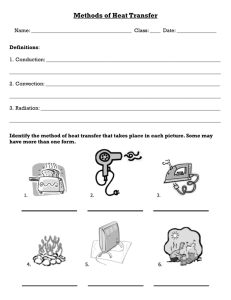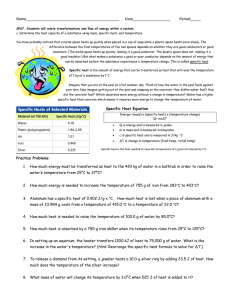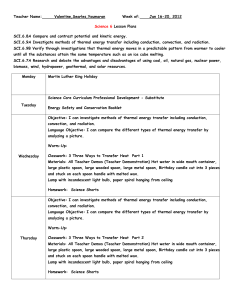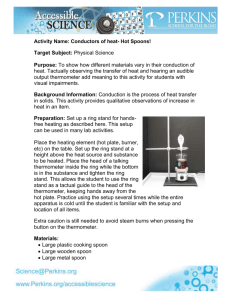Episode 102-1: Spooning charge (Word, 38 KB)
advertisement
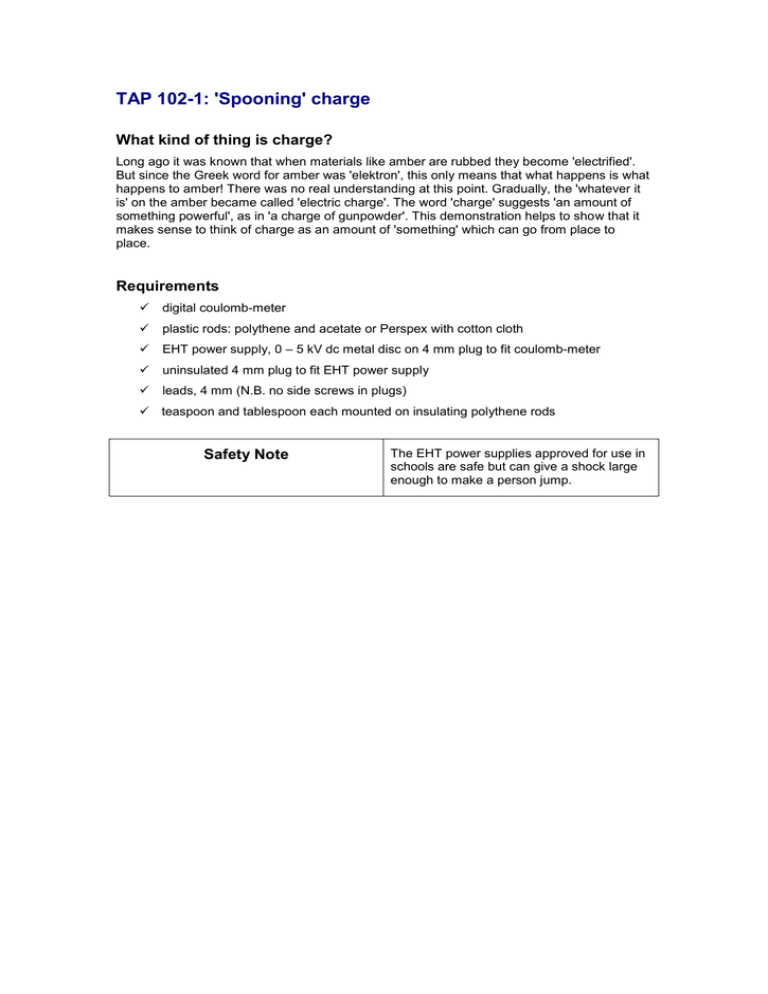
TAP 102-1: 'Spooning' charge What kind of thing is charge? Long ago it was known that when materials like amber are rubbed they become 'electrified'. But since the Greek word for amber was 'elektron', this only means that what happens is what happens to amber! There was no real understanding at this point. Gradually, the 'whatever it is' on the amber became called 'electric charge'. The word 'charge' suggests 'an amount of something powerful', as in 'a charge of gunpowder'. This demonstration helps to show that it makes sense to think of charge as an amount of 'something' which can go from place to place. Requirements digital coulomb-meter plastic rods: polythene and acetate or Perspex with cotton cloth EHT power supply, 0 – 5 kV dc metal disc on 4 mm plug to fit coulomb-meter uninsulated 4 mm plug to fit EHT power supply leads, 4 mm (N.B. no side screws in plugs) teaspoon and tablespoon each mounted on insulating polythene rods Safety Note The EHT power supplies approved for use in schools are safe but can give a shock large enough to make a person jump. 'Spooning' amounts of charge internal 50M resistor 5 kV supply insulating handle link to earth socket bare 4mm plug metal disk on 4mm plug 044 coulomb meter Electric charge can be picked up and carried by a spoon, just as if it were sugar or milk. Fix a metal spoon to an insulating handle, touch it onto the terminal of a high voltage supply, and carry the spoon across to a charge-measuring instrument, onto which the charge is dumped. Repeat the action: the charge measured increases by the previous amount. You can go on transferring charge like this in equal amounts several times. Try the spoon upside down. The charge carried is the same, so it is not completely like milk or sugar! But it can be moved around in 'spoonfuls', though any metal object will do as a 'spoon'. Try a bigger spoon. More charge is transferred. Try a bigger potential difference from the supply. Again more charge is transferred. So the amount of charge on a conductor depends on both the potential difference and on the size of the conductor. –19 Knowing that the charge on an electron is –1.6 10 C, you can calculate the number of electrons in a 'spoonful' of charge. A typical spoonful of negative charge is –2 nC. So the number of electrons is: charge on spoon 2 nC 1.2 10 10 electrons charge on electron 1.6 10 -19 C Charges can be produced also in the 'old fashioned way', by rubbing insulators like polythene or Perspex with a cloth. This strips a few electrons off one material and leaves them on the other. The piece with extra electrons is negatively charged; the piece with fewer is positively charged. Outcomes 1. Charges, which you cannot see, are real enough and can be ladled around and measured, just like other more tangible physical quantities. 2. Charges are either positive or negative. 3. The electron has a very small charge. A 'charged object' is one with a slight excess or deficit of electrons. External references This activity is taken from Advancing Physics Chapter 2, 30D
